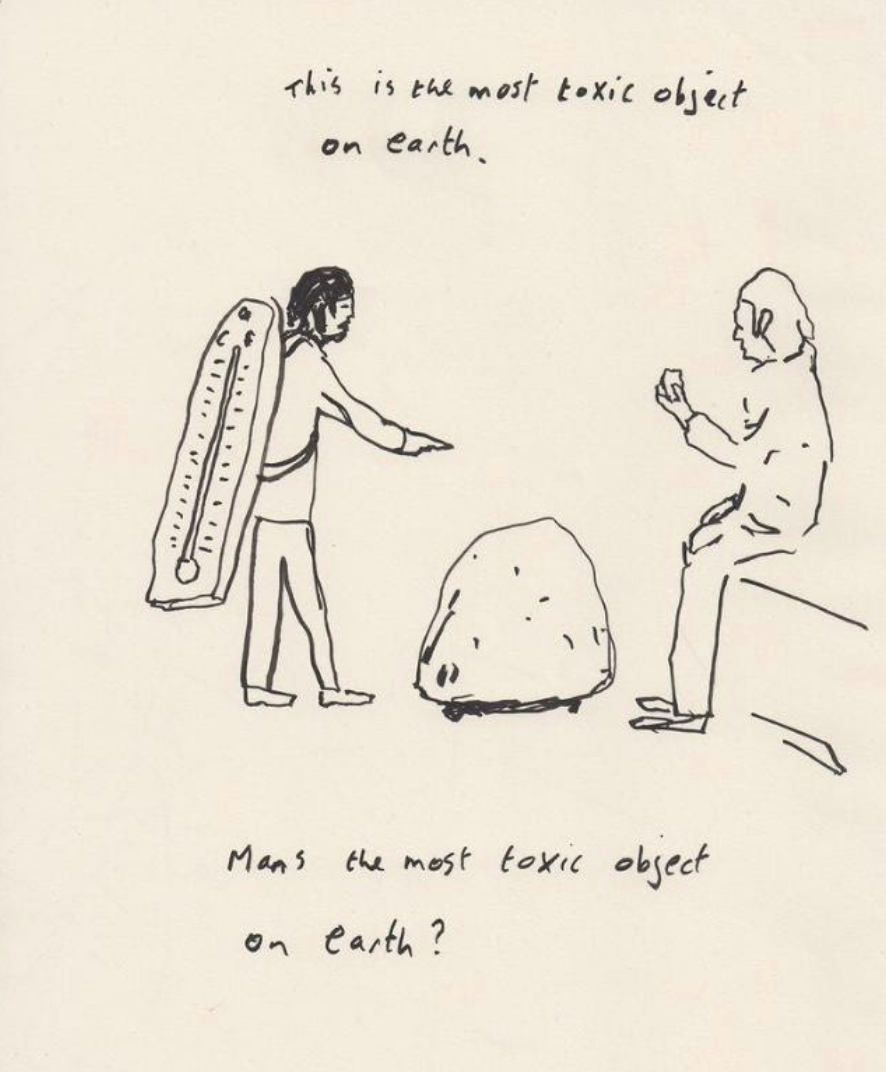Creative Cohort Spark Conversations at Climate Fest
As part of the Stirling Climate Festival, our creative cohort took to the streets of Stirling, sparking local conversations about people and the planet ahead of COP26.
Read our guest blog from Rory Green, an electronic musician and sound artist and part of the Stirling Climate Change cohort. Find out how they got on:
On the morning of Saturday 16 September, with COP26 right around the corner, the Scene Stirling climate cohort met at Stirling Climate Festival to share their work with the public.
The cohort engaged in critical conversations surrounding climate change and the arts and gathered digital materials for their final outcomes. The pieces themselves ranged from humorous, to despondent, to thought-provoking to bizarre.
“Uranium/Thorium.”
The Pineapple
Kate Clayton, a Glasgow-based performance artist, who spent the day approaching members of the public and presenting them with pineapple, engaging in conversations and inviting people to write their thoughts about the piece of fruit on a flag before skewering it, resulting in a pineapple decorated with words and phrases people had come up with. Examples included: luxury, end cars, food waste and air miles.
The Elephant’s Foot
David Hugh Sherry is a Northern Irish performance artist who brought a model he’d built of The Elephant’s Foot, the most toxic object on earth – a mass of corium and other radioactive substances that formed at the core of the Chernobyl reactor after the 1986 meltdown. The model omitted a sound work by Rory - periodic bursts and dark echoes, harshly modulated transients and jarring impulses.
The piece drew a good deal of attention from passers-by, some were intrigued, some were startled. Many approached us to ask for an explanation and depending on who they asked got varying responses that led on to conversations about public installation art, sound design, existential terror, and the nuclear capabilities of our species.
“If you go near it for more than three seconds you die”
Thermometer Backpack/Global Temperature Increase Line
David spent much of the day donning his thermometer backpack and physical model of the global temperature increase line. The strange models and David’s unique demeanour drew passers-by in for chats. For me, the conversations highlighted the cultural confusion we all feel around climate issues, and different people of different ages feel differently about the problem.
Paper Materials
Our stall contained an assortment of visual and written pieces by David and Taiye, which people perused at their leisure.
Taiye is a young Nigerian artist whose poetry made a considerable impact on passers-by. Talking with people about his poems, Taiye provides the rest of the cohort with an insight into the lives of people living in the global south, and how we are relatively lucky in terms of issues like temperature increases, seemed to strike a chord with people.
In Europe, we have the privilege of approaching climate issues with whimsy and having conversations about how we even wrap our heads around the issue. In countries like Nigeria, the worst of the problem is already on the doorstep, and Taiye’s poems provided a grounding to that reality.
Assorted Sound Works
For the periods that the Elephant’s Foot wasn’t active, various other sound pieces the cohort have been working on were played from the stall. These included:
A collaborative piece by Rory and Taiye, containing ambient music and one of Taiye’s readings.
A recording where David expresses some of his feelings about the climate crisis
Audio works for Kate’s meditations
Audio from a WIP collaboration from Rory and Sean’s visual EP
A collaborative piece where Rory set one of David’s list-readings to time-shifting ambient music.
Gathering Digital Materials
Much of the day was spent by Sean Hall, a Stirling-based filmmaker who filmed what was going on. Conversations between members of the cohort and members of the public, and filming footage for video pieces for our final outputs. The documentation is due to be edited and repurposed into film clips and other works, serving as part of the creative ecosystem.
“I think we were probably second place behind Frog Life. They were way too strong with the dead snakes in jars and frog imagery.”
Stirling Climate Festival coincided with another local festival, Stirling Science Festival. While in-person events for both festivals are now over, you can still get involved with online experiments and crafts at Science Festival Archives - Stirling Events until 31 October.




